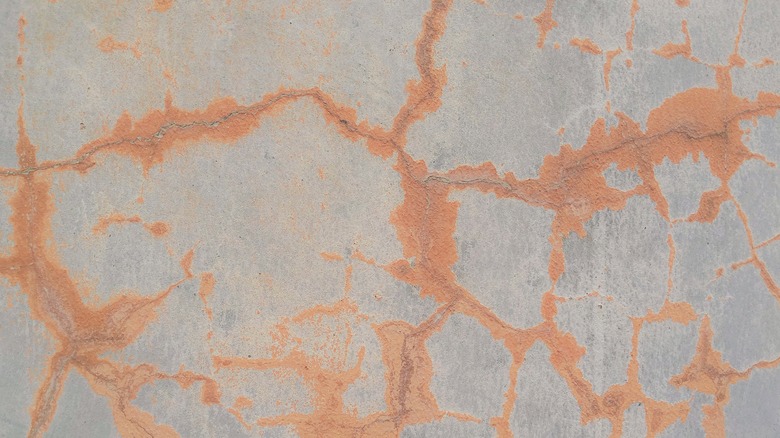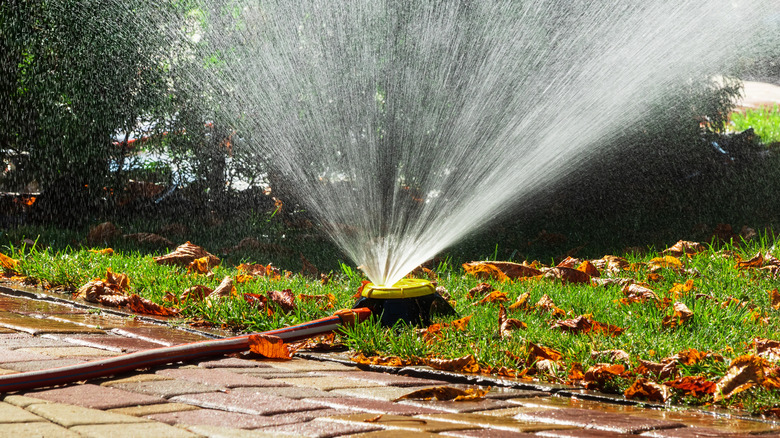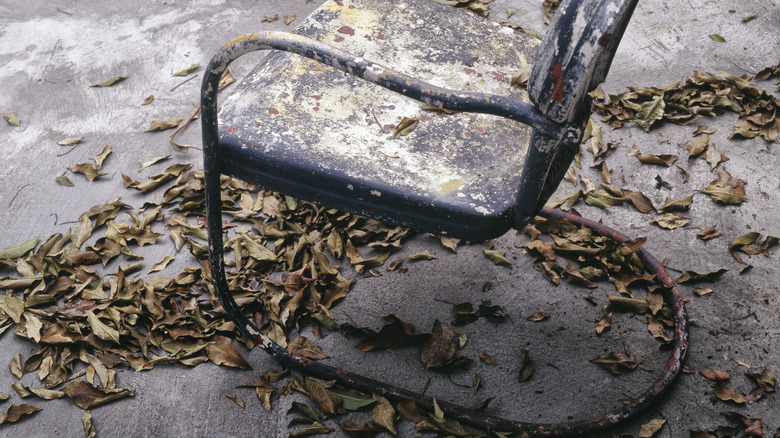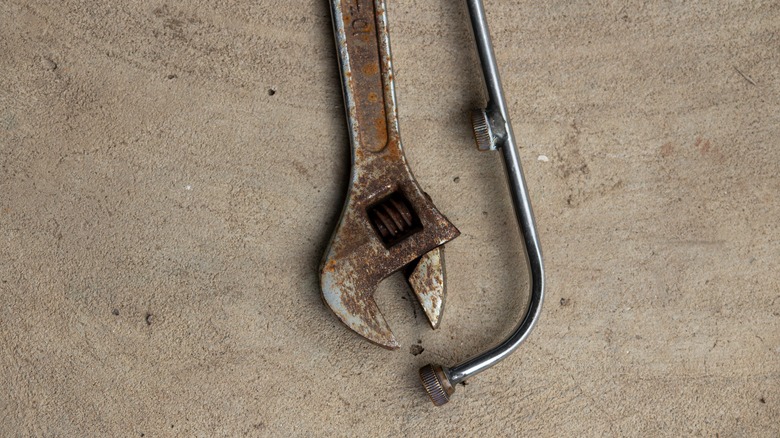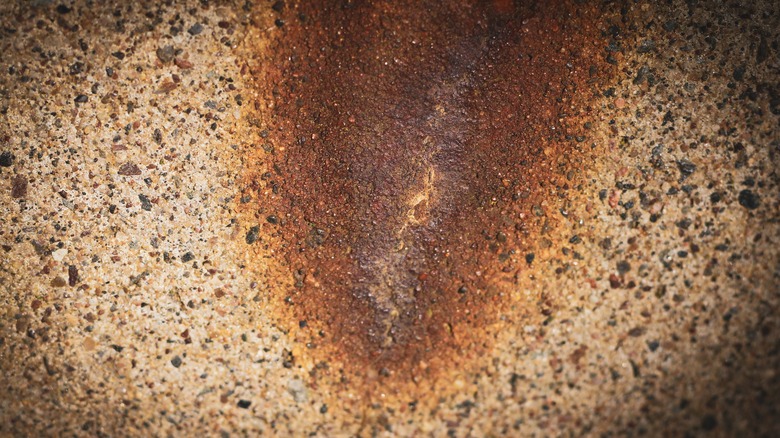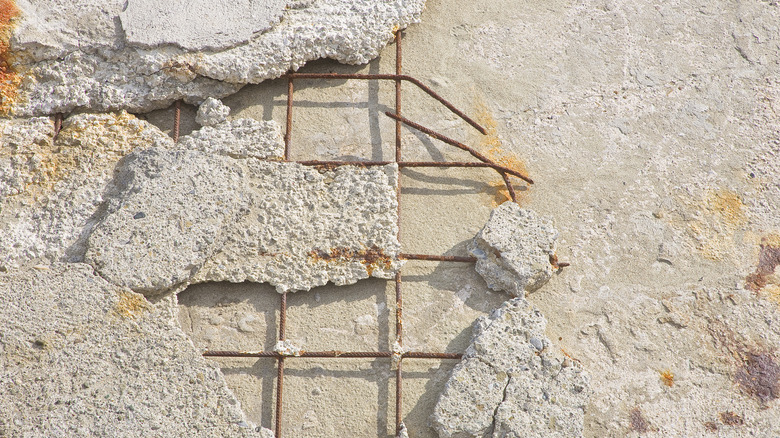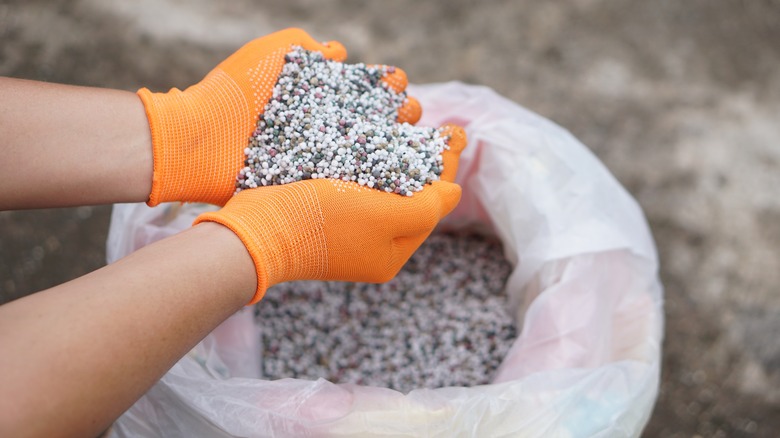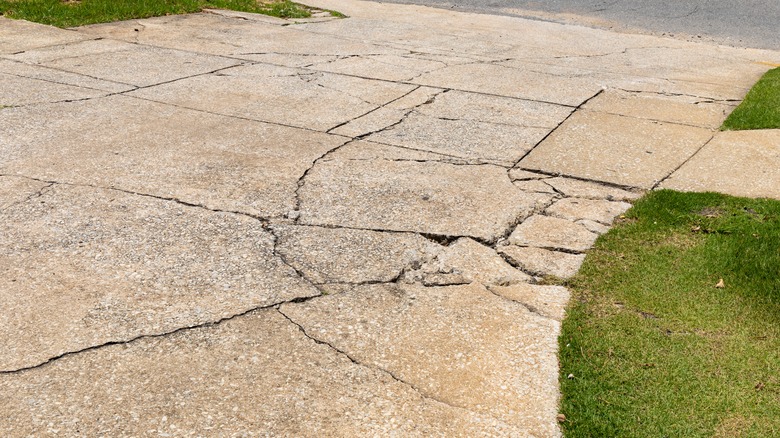7 Possible Reasons Your Concrete Driveway Is Covered In Rust Stains (& How To Remove Them)
We may receive a commission on purchases made from links.
Unsightly rust stains on your concrete driveway quickly detract from curb appeal, especially if you're trying to sell your home. Depending on where you live, you may even risk a warning letter or fine from your homeowner's association (HOA) due to the stain marring your driveway. There can be many possible causes for rust stains on your concrete, including iron-rich water, rusty tools, contact with metal furniture, and even ongoing structural damage under the driveway.
Though these stains are annoying, you can easily remove them with common cleaning methods. Common household products like vinegar and baking soda can easily remove rust, as can lemon and salt, or chemically based removers. Because each cause may leave a different type of stain, identifying the cause can help you decide on the best removal methods.
Rust is the result of iron and other metals reacting with water and oxygen. It's not just an eyesore, it can potentially damage your driveway if the rust source is internal. Not only does rust affect your concrete coating on the surface, but if caused internally, it can also weaken the concrete, making it more susceptible to cracks. Even small cracks in your driveway can become a big problem, especially as they bear heavy vehicle traffic in addition to snow and ice. As the rust expands, it puts more pressure on the concrete, leading to spalling. If the stain is the result of rusting inside, you must address the underlying cause before you attempt stain removal, or it will likely reappear.
Iron-rich water from sprinklers keeps hitting your driveway
Sprinkler or irrigation systems with improper installation or positioning may spray streams of water onto your driveway. As water droplets hit the concrete, iron deposits contained within may leave rust stains behind, gradually building up over time. The same thing can occur with a constantly dripping hose. Use oxalic acid to remove rust stains from sidewalks and driveways. These cleaners are best for stubborn, set-in stains but require careful handling with gloves and masks. Look for options that specifically list they're suitable for water-borne concrete rust, like MaxTite Oxalic Acid.
Prolonged contact with metal objects
As metal objects sit on concrete, moisture from rain and snow reacts to the metal, oxidizing and transferring rust stains onto the concrete. The stain will often take on a shape similar to the object on the concrete, such as a long rust mark from an outdoor chair, the circular imprint of a planter, or a rectangular stain from a grill. These are surface-level stains, and thus easy to remove with a treatment of distilled white vinegar. Let the vinegar treatment sit for 15 minutes, scrub the stain with a brush, and then rinse.
Rusty tools left on the driveway
Working on projects on the driveway often requires tools, some of which may have rust on them. Leaving them on the driveway can transfer the rust to your concrete. Yard tools such as rakes or shovels may also leave rust marks. You'll typically notice that the rust stains mirror the shape of the tool. You can again scrub them with vinegar or salt sprinkled over lemon juice to lift the stain. Guard against this happening again by removing any rust from tools before setting them down or — even better — storing them properly between uses.
Aggregates in your concrete mix
Some concrete driveways feature aggregate, where stones, rocks, and sand are mixed with cement for a textured look. It's possible your aggregate driveway may feature some stones that include iron. Over time, with wear, their exposure to oxygen and water can result in rust stains in the driveway. These rust stains are often centered around the iron-containing stones themselves, so they're easy to spot. You can remove them with an iron stain remover, such as Singerman Rust Remover for Concrete, and some experts also say to remove the offending rocks, or the stain may reappear.
Internal rust coming to the surface
Sometimes the cause of the rust stains is actually underneath the concrete, not on top of it. Rebar or wire mesh reinforcing a driveway can corrode with exposure to oxygen and moisture. As corrosion continues, the rust may move toward the surface, expanding and causing discoloration. In addition to the rust stains, you may notice a bubbling texture to your concrete and spalling. If you suspect this is the stain's cause, especially after attempting to remove the stain, contact a professional concrete company for an inspection.
Fertilizer or soil pellets left on the driveway
Fertilizing your plants is great for their health, yet the practice can be harmful to your driveway if stray pellets land on the surface. Similar to how iron-rich water can leave rust stains on concrete, granular fertilizer can do so after it comes into contact with moisture. Fertilizer stains may need a stronger treatment than basic rust. If vinegar doesn't lift the discoloration, use a cleaner containing oxalic acid — it's specifically formulated to break down the iron compounds in fertilizer. Apply the product, let it sit for a few minutes, scrub, and rinse thoroughly.
Abrasion and other concrete damage
Concrete driveways in need of resealing or with heavy wear can develop abrasions, like chips and cracks. Water can seep into the cracks, bringing with it iron deposits or eventually reaching metal-based reinforcement embedded in the concrete. The interaction of oxygen, iron, and water causes corrosion, which causes rust stains on the surface, often inside or near the damaged spots. Apply a commercial rust remover to treat the stain, and then seal all cracks to stop the rust from returning to the surface.
